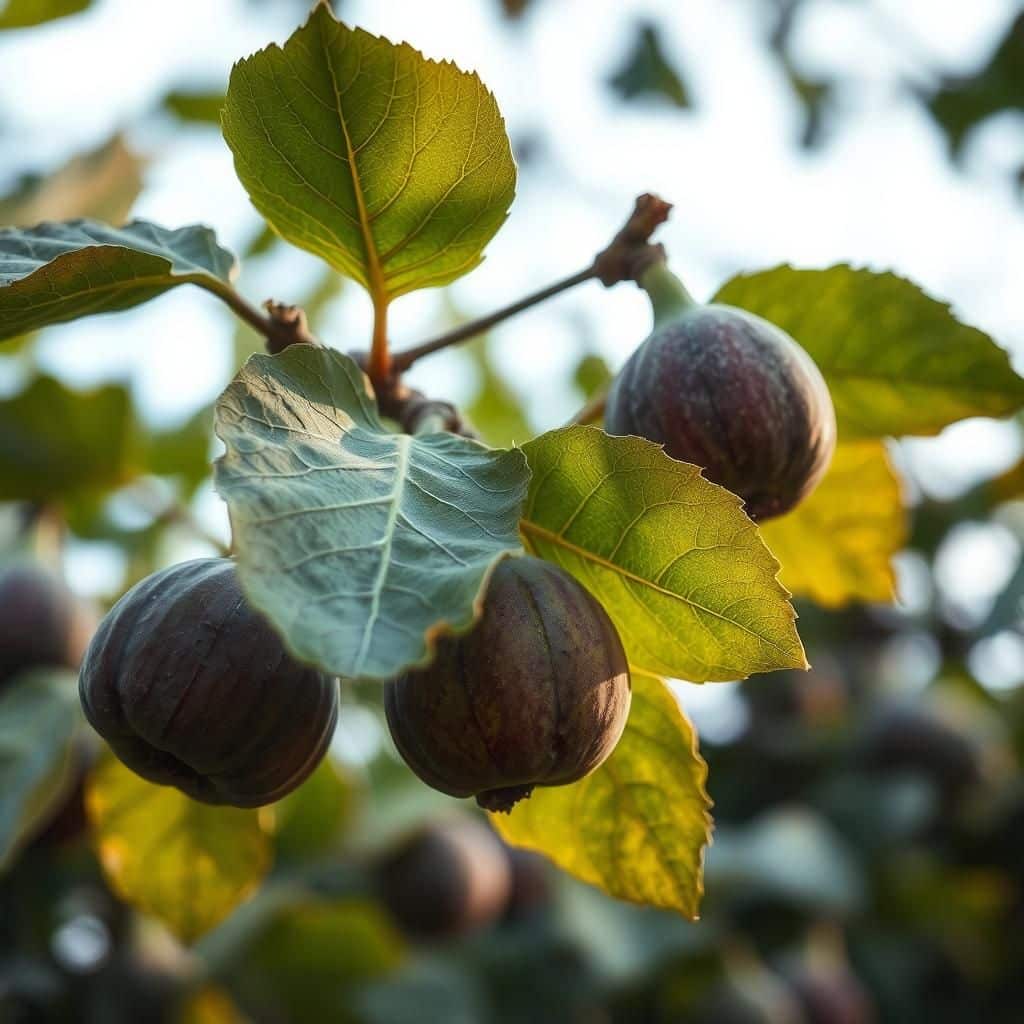Do Fig Trees Lose Their Leaves? Understanding Leaf Drop in Fig Trees

Fig trees are cherished for their lush foliage and sweet fruit, but many gardeners may wonder about their seasonal behavior, particularly regarding leaf drop. Understanding whether fig trees lose their leaves can help maintain healthy plants and optimize growth. This article delves into the factors influencing leaf drop in fig trees, exploring the natural cycles of these resilient plants and the environmental conditions that affect their leaf retention. By examining the reasons behind leaf loss, we aim to equip gardeners with the knowledge to nurture their fig trees effectively throughout the changing seasons.
Do Fig Trees Lose Their Leaves?
Fig trees, particularly the common fig (Ficus carica), are deciduous plants, meaning that they do lose their leaves annually. Typically, fig trees will shed their leaves in the fall as a response to dropping temperatures and shorter days, entering a period of dormancy during the cold winter months. This natural process allows the tree to conserve energy and resources during inhospitable weather. In the spring, as temperatures rise, new leaves will emerge, signaling the return of growth and vitality. The loss of leaves is a crucial part of the fig tree's lifecycle, allowing it to adapt to seasonal changes in its environment.
What Causes Fig Trees to Shed Their Leaves?
The shedding of leaves in fig trees is primarily caused by environmental factors such as changes in temperature, light, and water availability. As days get shorter and temperatures drop in the late fall, the tree recognizes the onset of winter, prompting it to conserve resources by shedding its leaves. This process is called abscission, wherein the tree forms a layer of cells at the base of each leaf stem, preventing the flow of nutrients and water, ultimately leading to leaf drop.
When Do Fig Trees Typically Lose Their Leaves?
Fig trees generally lose their leaves in the late fall, although this can vary depending on the climate and specific growing conditions. In temperate regions, this can occur anywhere from late October to early December. In warmer climates, fig trees might retain their leaves longer, only dropping them when temperatures consistently decrease. The precise timing can vary based on local weather patterns and the specific variety of fig tree.
How Long Do Fig Trees Stay Dormant?
During the winter months, fig trees remain dormant, typically from late fall until early spring. This period of dormancy lasts approximately three to four months, during which the tree conserves energy and resources by minimizing metabolic activity. When winter ends and temperatures begin to rise, the tree will reawaken, leading to the development of new leaves and the onset of the growing season. The duration of dormancy can vary based on the climate and weather conditions of the region.
See also:
Are There Any Types of Fig Trees that Are Evergreen?
While most common fig trees are deciduous, there are variations that can be considered evergreen, particularly in tropical climates. Some species, such as the petite noir fig, may retain leaves year-round, especially in areas that do not experience cold winters. The growth habit and leaf retention of these evergreen fig trees depend largely on local climate conditions, such as consistent warmth and humidity.
What Should You Do If Your Fig Tree Loses Leaves Early?
If a fig tree loses its leaves earlier than expected, it may be a sign of stress due to factors such as drought, pests, or disease. It's important to assess the tree's health by examining the soil moisture level, checking for insect infestations, and looking for signs of disease. Proper care, including adequate watering and addressing any pest issues, can help restore the tree's health and promote proper leaf growth during the next season.
| Factor | Effect on Leaf Shedding |
|---|---|
| Temperature | Causes dormancy and leaf drop during colder months |
| Light | Shorter days trigger abscission process |
| Water | Lack of moisture can lead to early leaf drop |
| Pests | Infestations may cause stress, resulting in leaf loss |
| Disease | Pathogens can harm tree health and lead to shedding |
Factors Influencing Leaf Drop in Fig Trees
Fig trees are known for their luscious green leaves, but they do experience leaf drop as part of their natural growth cycle. This phenomenon can occur due to various factors such as seasonal changes, environmental stress, or even pest infestations. During the fall and winter months, fig trees may enter a dormant state, leading to the shedding of leaves to conserve energy and resources. Conversely, sudden changes in temperature or humidity, as well as overwatering or underwatering, can stress the tree, causing it to drop leaves prematurely. Understanding these influences is essential for maintaining the health and vitality of your fig tree.
The Role of Seasons in Leaf Drop
Seasonal shifts play a crucial role in the phenomenon of leaf drop in fig trees. As the temperatures begin to cool in late autumn, fig trees sense the approaching winter and start to prepare by shedding their leaves. This natural process not only helps the tree conserve energy and water during the colder months but also protects it from potential cold damage. In spring, as temperatures rise, new growth begins and fig trees will again produce fresh leaves, marking the start of their growing season.
Environmental Stressors Affecting Fig Trees
Environmental stressors such as drought, excessive moisture, and extreme temperatures can lead to significant leaf drop in fig trees. When a fig tree experiences drought conditions, it may drop leaves to prevent water loss through transpiration. Conversely, overwatering can lead to root rot, prompting the tree to shed leaves as a survival mechanism. Monitoring the moisture levels in the soil and adjusting irrigation practices are vital in maintaining the tree's overall health.
See also:
Pest Infestations and Leaf Drop
Pest infestations can severely impact the health of fig trees and contribute to leaf drop. Common pests like aphids, scale, and spider mites can weaken the tree by extracting sap and causing damage to the leaves. When the tree is under attack, it may respond by shedding leaves to redirect its energy toward survival and recovery. Regular inspection and proactive pest management can help mitigate the effects of these pests on the tree's leaf health.
Nutrient Deficiencies and Health of the Fig Tree
Nutrient deficiencies can also lead to leaf drop in fig trees. Essential nutrients such as nitrogen, potassium, and phosphorus are vital for overall tree health and leaf production. When the tree lacks these nutrients, it may not be able to support its foliage adequately, leading to premature leaf drop. Conducting soil tests and utilizing appropriate fertilizers can ensure that fig trees receive the necessary nutrition to thrive.
Signs of a Healthy Fig Tree Versus Leaf Drop
Identifying the signs of a healthy fig tree versus those indicating leaf drop is essential for effective care. A healthy fig tree will display vibrant green leaves, strong growth, and an abundance of mature fruit during the growing season. In contrast, excessive leaf drop, yellowing leaves, or wilting can signal underlying issues that need addressing. Understanding these signs allows for timely intervention to restore the fig tree to optimal health.
Questions from Our Readers
Do fig trees lose their leaves in winter?
Yes, fig trees are generally deciduous, meaning they will lose their leaves during the winter months in colder climates. This process helps them conserve energy and water during the colder seasons when growth slows down.
How often do fig trees shed their leaves?
Fig trees typically shed their leaves once a year, usually in the late fall to prepare for winter dormancy. The timing can vary depending on the specific species of fig tree and the climate in which it is growing.
See also:
Will my fig tree lose its leaves if it is indoors?
If a fig tree is kept indoors, it might still lose its leaves, particularly if it experiences changes in lighting or humidity. Indoor environments can often differ from their natural habitat, which might trigger this leaf drop.
Can a fig tree recover its leaves after losing them?
Yes, a fig tree can recover its leaves after losing them, as long as it is kept in a suitable environment and receives proper care. With adequate watering and appropriate light, the tree will typically regrow its leaves in the spring as new growth begins.

If you want to read more articles like Do Fig Trees Lose Their Leaves? Understanding Leaf Drop in Fig Trees, we recommend you check out our Landscaping category.
Leave a Reply
Related Articles